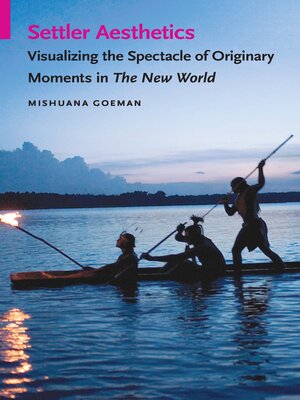Settler Aesthetics
ebook ∣ Visualizing the Spectacle of Originary Moments in The New World · Indigenous Films
By Mishuana Goeman

Sign up to save your library
With an OverDrive account, you can save your favorite libraries for at-a-glance information about availability. Find out more about OverDrive accounts.
Find this title in Libby, the library reading app by OverDrive.



Search for a digital library with this title
Title found at these libraries:
| Loading... |
In Settler Aesthetics, an analysis of renowned director Terrence Malick's 2005 film, The New World, Mishuana Goeman examines the continuity of imperialist exceptionalism and settler-colonial aesthetics. The story of Pocahontas has thrived for centuries as a cover for settler-colonial erasure, destruction, and violence against Native peoples, and Native women in particular. Since the romanticized story of the encounter and relationship between Pocahontas and Captain John Smith was first published, it has imprinted a whitewashed historical memory into the minds of Americans.
As one of the most enduring tropes of imperialist nostalgia in world history, Renaissance European invasions of Indigenous lands by settlers trades in a falsified "civilizational discourse" that has been a focus in literature for centuries and in films since their inception. Ironically, Malick himself was a symbol of the New Hollywood in his early career, but with The New World he created a film that serves as a buttress for racial capitalism in the Americas. Focusing on settler structures, the setup of regimes of power, sexual violence and the gendering of colonialism, and the sustainability of colonialism and empires, Goeman masterfully peels away the visual layers of settler logics in The New World, creating a language in Native American and Indigenous studies for interpreting visual media.
As one of the most enduring tropes of imperialist nostalgia in world history, Renaissance European invasions of Indigenous lands by settlers trades in a falsified "civilizational discourse" that has been a focus in literature for centuries and in films since their inception. Ironically, Malick himself was a symbol of the New Hollywood in his early career, but with The New World he created a film that serves as a buttress for racial capitalism in the Americas. Focusing on settler structures, the setup of regimes of power, sexual violence and the gendering of colonialism, and the sustainability of colonialism and empires, Goeman masterfully peels away the visual layers of settler logics in The New World, creating a language in Native American and Indigenous studies for interpreting visual media.






